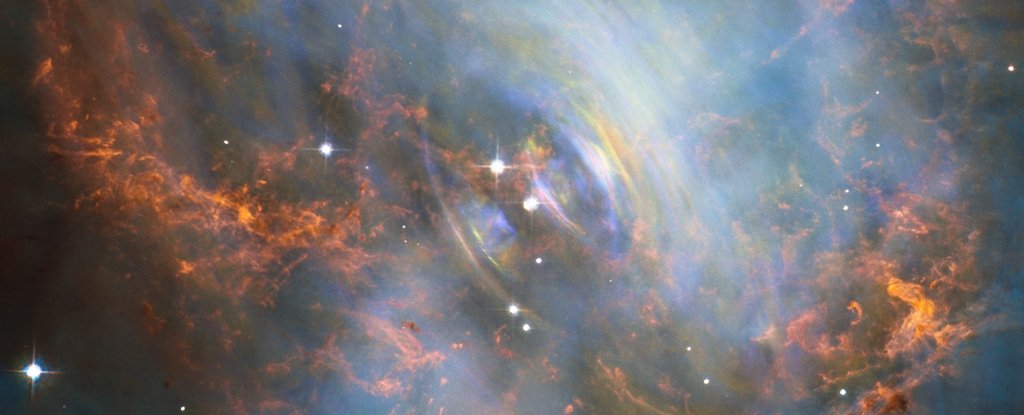ARTICLE AD
A gargantuan asteroid impact on Ganymede, the solar system’s largest moon, significantly altered the body’s axis, according to a new study in Scientific Reports.
Ganymede is a Jovian moon that is larger than Mercury. It’s a compelling venue for scientific (and specifically astrobiological) research because the moon is suspected to harbor an ocean of liquid water under its icy surface. But the new research affirms another interesting chapter in Ganymede’s story, one posited as early as the 1980s: that about 4 billion years ago, the moon was impacted by a massive asteroid, which left arcing furrows on the moon’s surface.
In the recent study, Hirata Naoyuki, a researcher at Kobe University, simulated the size of the asteroid that would have caused the furrow structures on Ganymede. Hirata found that the asteroid that slammed into Ganymede was about 20 times larger than the asteroid that hit Earth 66 million years ago, ending the reign of the dinosaurs.
 Furrows (right) on Ganymede’s surface, which formed around a central spot (noted in red +, left). Image: HIRATA Naoyuki
Furrows (right) on Ganymede’s surface, which formed around a central spot (noted in red +, left). Image: HIRATA Naoyuki The transient crater created by the impact was between 870 and 994 miles (1,400 and 1,600 kilometers) across. According to the simulations, the impacting body would have to have been that large to shift Ganymede’s rotational axis to where it is today.
“The giant impact must have had a significant impact on the early evolution of Ganymede, but the thermal and structural effects of the impact on the interior of Ganymede have not yet been investigated at all. I believe that further research applying the internal evolution of ice moons could be carried out next,” Hirata said.
Luckily, that line of research is on the docket. More than a decade since it was announced, ESA’s Jupiter Icy Moons Explorer (JUICE) mission launched last year. The spacecraft recently swung by Earth and the Moon on its way to the Jovian system, where it is expected to arrive in 2031. JUICE will make six months of observations of Ganymede in 2034, which could shed light on the geological history of the solar system’s biggest moon.
Of course, the main focus on Ganymede has to do with life, which has not yet been discovered beyond Earth. Both Ganymede and Jupiter’s moon Europa have showed signs of harboring water under their icy shells; in 2021, water vapor was detected in Ganymede’s atmosphere. Since water is a prerequisite for life as we know it, there is a lot of hope riding on the JUICE mission. We’ll know a lot more in just seven short years.

 2 months ago
22
2 months ago
22 

